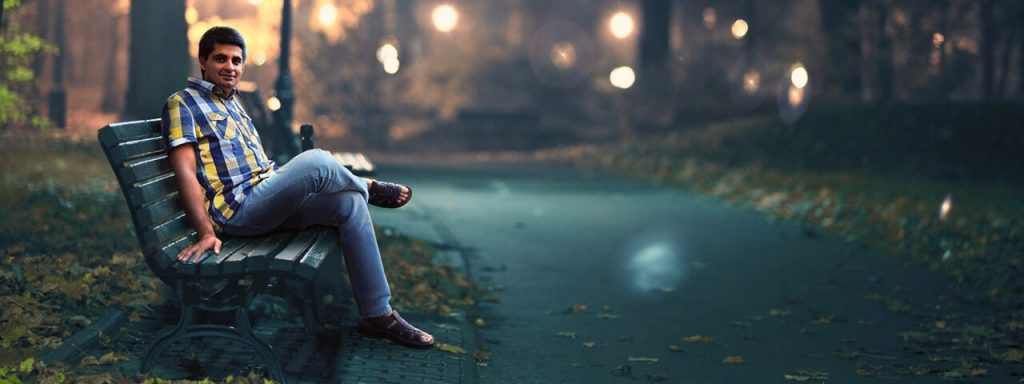Seeing halos around lights can be a cause for concern, or it can be completely normal.
If you notice a sudden appearance of halos or they’re accompanied by pain, blurred vision or other severe symptoms, seek immediate medical care, as this can signal a serious eye condition.
Why do halos appear?
Halos are bright, colorful circles that appear around lights. They are most often noticed at night time around street lights and headlights and can significantly affect vision clarity while driving.
The appearance of halos around light sources can be caused by a variety of eye conditions, specifically those that alter the shape of the cornea and cause the light that enters the eye to bend in an unusual way.
How is a clear image produced?
In order to produce a clear image, the eyes must complete a specific process that heavily relies on the integrity of each of the ocular structures.
When we look at an object, the light that is reflected off of the object enters the eye through the clear front layer of the eye, called the cornea. The cornea bends the light before it passes through a watery substance that fills the area behind the cornea (aqueous humor), on its way to the pupil.
The light then passes through the pupil to the lens behind it. The lens adjusts its shape to bend and focus the light a second time, to ensure that a clear image will be seen.
After it bends a second time, the light travels to the back of the eye which is filled with a clear, gelatinous substance (vitreous) until it reaches the retina, the light-sensitive layer at the back of the eye.
From the retina, the visual information is sent to the brain where it is interpreted and processed for the production of a clear image.
The process of seeing is dependent on the perfection of the eye and all of its structures, including:
- Eyeball shape
- Corneal shape and integrity
- Lens clarity and curvature
- Retinal health
If any of these components do not function properly, or are irregularly shaped, vision problems can occur.
Since the cornea is responsible for bending light as it enters the eye, if you are seeing halos around lights, you may have an eye condition that is affecting the shape of your cornea.
If you see haloes, contact an eye doctor near you, who can diagnose and treat any underlying vision condition.
SEE RELATED: Headaches and Migraines
Eye conditions that affect corneal shape
1. Dry eye syndrome
Dry eye syndrome (DES) occurs when the eyes are chronically dry. When this occurs, it can alter the shape of the cornea and cause light entering the eye to scatter— resulting in the appearance of halos around lights.
2. Astigmatism
Astigmatism occurs when the cornea is irregularly shaped. This can cause the light that enters the eye to bend in an unusual way and result in the appearance of halos.
3. Cataracts
Seeing halos around lights is one of the most common symptoms of cataracts.
A cataract develops when the eye’s naturally transparent lens becomes cloudy or opaque. Cataracts are most often seen in older adults, though they progress slowly over time and usually begin to develop around age 50.
When the lens becomes cloudy, light is bent in an unusual way and scatters as it enters the eye, causing the appearance of halos around lights.
Cataract surgery to replace the cloudy lens with a plastic intraocular lens can also lead to the appearance of halos— this is a common side effect immediately following cataract surgery.
4. Fuch’s dystrophy
Fuch’s dystrophy is a progressive genetic disease that causes the cornea to swell. When the cornea swells, its shape is altered and light can no longer enter the eye at the correct angle. This often results in the appearance of halos around lights.
Symptoms of Fuchs’ dystrophy usually appear between the ages of 50 and 60.
5. Glaucoma
Glaucoma occurs when the optic nerve becomes damaged due to elevated pressure within the eye, and is a leading cause of blindness worldwide. Seeing halos around lights can be an early sign of acute-angle glaucoma, which is considered a medical emergency.
If you notice a sudden appearance of halos around lights, along with a headache, vomiting, blurred vision, eye pain or weakness, seek immediate medical care.
6. LASIK surgery
The appearance of halos is a common side effect following LASIK (laser in-situ keratomileusis) surgery and is generally not a cause for concern. The halos will typically disappear after a few weeks.
When to see your eye doctor
Seeing halos around lights could indicate the presence of an eye condition such as cataracts or glaucoma, but may also be a common side effect of dry eye or LASIK surgery.
LEARN MORE: Guide to Eye Conditions
Since halos can appear from a variety of conditions, if you are seeing halos around lights, it is always a good idea to schedule an eye exam to rule out any serious eye conditions.
An early diagnosis of an eye condition can increase your chances of optimal treatment results.


